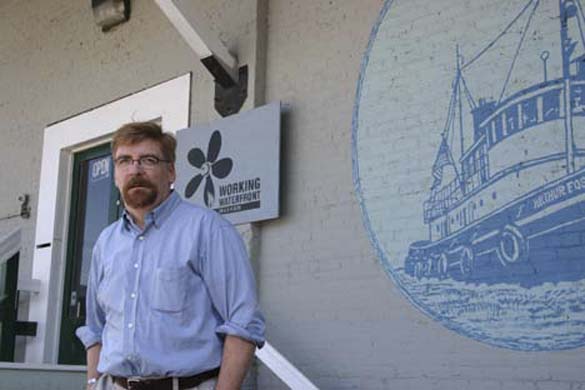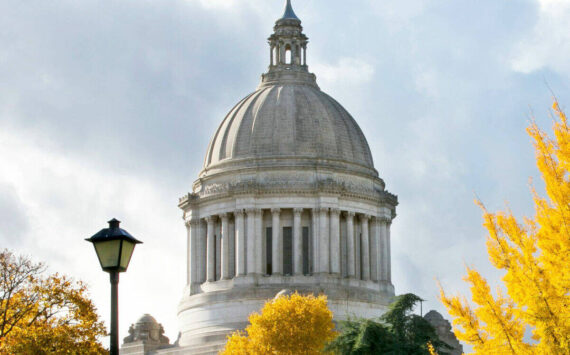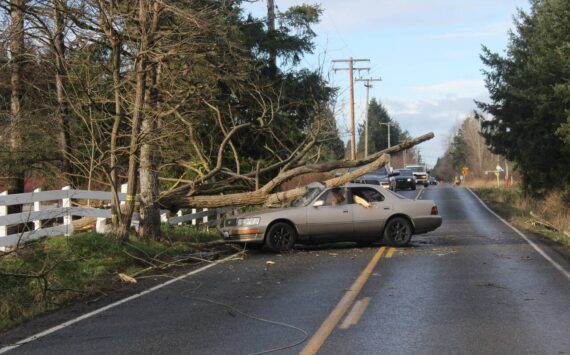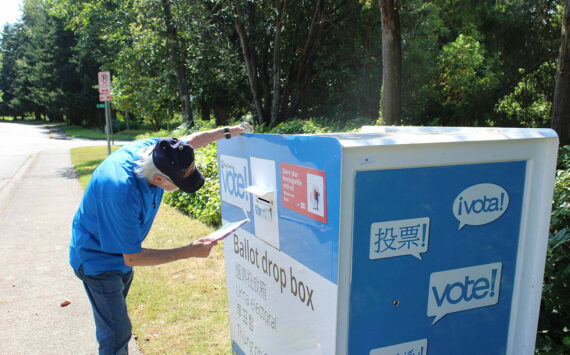For nearly a decade, visitors to the city-owned, century-old Balfour Dock building along the Thea Foss Waterway have explored and learned about Tacoma’s rich maritime history through videos, photographs, and boating exhibits available at the Working Waterfront Museum. Boat builders have also used the museum to restore and build maritime vessels in a boat shop connected to the museum.
“This has sort of evolved,” said Tom Cashman, the museum’s executive director, during a tour of the museum on Wednesday. ”We started as just kind of a hobby center for very dedicated boat builders.”
The museum still has that small, quaint feeling: it occupies only one-third of the entire 45,000 square-foot building (the remaining space is leased to a boat storage company), and some of the site’s physical structures — specifically the wharf and esplanade — resemble a tall ship battered at sea. Add a redevelopment focus on hotels and condominiums along the Thea Foss Waterway, and the future of the museum starts to look tenuous.
Enter the Foss Waterway Seaport — a private, non-profit organization with plans to renovate the historic dock building, repair approximately 300 feet of the deteriorating wharf in order to create a public esplanade, preserve approximately 1.3 acres of adjacent space for parking and events, and create almost one-third of a nautical mile of waterfront and in-water facilities.
”Redevelopment pressures along the waterway meant that that whole dream would be gone if we didn’t make a decision to take control of our destiny,” explained Cashman, who is also the Foss Waterway Seaport’s (FWS) executive director (the FWS includes the Working Waterfront Museum). ”The only way to save the building was for us to be the developer, if you will.”
The Foss Waterway Development Authority (FWDA), a seven-member board formed by the Tacoma City Council to oversee development and marketing of publicly-owned Foss Waterway properties, supported that plan. On Feb. 16, FWDA and FWS entered into an agreement to expand and develop the property into Tacoma’s premier maritime community center.
“The compelling reason for our existence is that Tacoma’s history started right here,” he said, standing in the cavernous structure that once served as a wheat warehouse. “Trains would pull up to the west side of the building, workers would unload bags of wheat, and ships would be loaded for distribution. We are the only maritime museum in the country that is able to tell the story related to the building where it actually took place. We’re not reconstructing something — we’re rehabilitating.”
True, Tacoma has made considerable investments in museum’s over the past decade, including the Tacoma Art Museum, the Museum of Glass, and the Washington State History Museum. But Cashman argued that Tacoma’s history points to the maritime industry. ”Not one of those entities has place to tell the story of Tacoma,” he added. “Tacoma’s history will be told here.”
To tell that history, FWS and FWDA agreed to a joint memorandum of understanding that outlines specific public- and private-funding benchmarks for the project — estimated to cost $21.5 million.
Cashman and FWDA are working toward an initial fundraising goal of $15.5 million ($11.4 million from the private sector, and $4.1 from the public sector) in three phases.
The first phase aims to raise $4.1 million to repair and restore the wharf and esplanade, and $3.7 million to rehabilitate the building’s shell, as well as sustain museum operations.
The second phase aims to raise $7.7 million to rehabilitate and develop the dock building — with a specific focus on exhibitry and tenant improvements, including a 27,000 square-foot museum space, 3,000 square-feet of classrooms for marine biology, a 3,000 square-foot boat shop (“The largest cultural preservation boat shop on Puget Sound,” said Cashman), 1,800 square-foot seminar space, a 4,000 square-foot reception and meeting area (called the Port of Tacoma room), as well as a theater, cafe, restrooms and offices. Funds raised will also support operating expenses for five years.
The third phase aims to raise funds for in-water improvements, including one concept that calls for a ferry service from the Tacoma waterfront to Des Moines (”From Des Moines, it’s a six-minute bus ride to the airport,” Cashman explained).
On Tuesday, Cashman will announce the results of WFS’s first phase of fundraising. Though he couldn’t share the results quite yet, he was confident. “We have until the end of next year to come up with $4.1 million for the wharf and esplanade,” he explained. “We’re well on our way to doing that.”
Cashman added that Washington State Representative Adam Smith is presently lobbying for funds.
During a Port of Tacoma study session on June 9, Cashman and FWS Vice President Luke Curtis outlined some of the fundraising achievements to date, including $2 million from the state legislature, $250,000 in state historical grants, and $1 million in commitments from the FWS board. ”Within the next 60 days hopefully the public part of phase one fundraising will be done,” Curtis told Port of Tacoma Commissioners.
Work on the project can’t begin until those funds are raised, and the wharf and esplanade are repaired. Cashman showed me around the facility — including a walk along a float to inspect the wharf and the building’s underside. One section of the wharf was a concave snarl of broken planks and pilings. ”The biggest factor is the cost involved in rebuilding the wharf,” Cashman explained. ”The wharf comes under twenty-five percent of the building, and the wharf is in bad shape. We don’t think the building could survive as a potential redevelopment site if we had a significant seismic event. That’s what makes this urgent. Once that is done and all the engineering and planning work is completed, we’re totally confident the building will survive another 100 years.”
If Cashman’s fundraising goals fall into place, repairs to the wharf would last six months, and improvements to the building could begin next summer. ”I think we could be up and running in three years,” he said.


Todd Matthews is editor of the Tacoma Daily Index and recipient of an award for Outstanding Achievement in Media from the Washington State Department of Archaeology and Historic Preservation for his work covering historic preservation in Tacoma and Pierce County. He has earned four awards from the Society of Professional Journalists, including third-place honors for his feature article about the University of Washington’s Innocence Project; first-place honors for his feature article about Seattle’s bike messengers; third-place honors for his feature interview with Prison Legal News founder Paul Wright; and second-place honors for his feature article about whistle-blowers in Washington State. His work has also appeared in All About Jazz, City Arts Tacoma, Earshot Jazz, Homeland Security Today, Jazz Steps, Journal of the San Juans, Lynnwood-Mountlake Terrace Enterprise, Prison Legal News, Rain Taxi, Real Change, Seattle Business Monthly, Seattle magazine, Tablet, Washington CEO, Washington Law & Politics, and Washington Free Press. He is a graduate of the University of Washington and holds a bachelor’s degree in communications. His journalism is collected online at wahmee.com.








